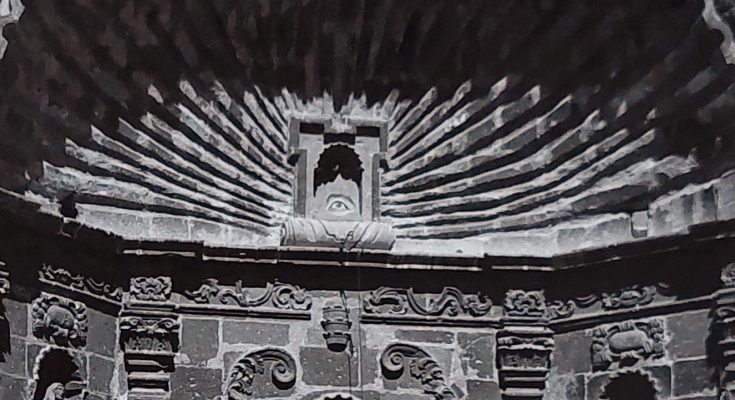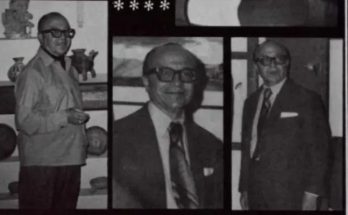By Luis Felipe Rodriguez
Much has been speculated about the “Eye of Providence” that was on the façade of the church of Nuestra Señora de la Salud. The building was designed by architect Miguel Custodio Durán and is quite similar to the church of San Juan de Dios that he designed in Mexico City. The image was removed from the façade of la Salud many years ago, but we do not have the exact date and the real reason for its removal—other than many speculations.
What we do know is what the image represented. The use of the triangle as a Christian religious symbol dates back to the first centuries of the Common Era. It was made up of three fish symbolizing baptism. It may also have been related to the Chi Rho, one of the earliest Christian symbols, formed by superimposing the two Greek letters—chi and rho. The Eye of Providence became a symbol during the first year of the Christian church. It was used by persecuted Christians as a means to communicate with each other. They used different images for this purpose—the fish, the cross, or an eye within a triangle.
Over time, Freemasons took over this symbol, with the triangle representing a pyramid. During the 8th and 9th centuries, the triangle began to be used by Christianity to symbolize the Holy Trinity—a halo surrounded the heads of an anthropomorphic representation of God, especially the Father, and became common in Greece and Italy around the 15th century. The Greeks expressed the idea of the immanence of the being of God by adding the phrase «The Being» (ο ων) in each of the angles of the triangle. The incorporation of the tetragram and the eye within was a Renaissance art creation. The omniscience and omnipresence of God the Father was represented in the tetragram related to the New Testament passage 1 Peter 3, 12: «For the eyes of the Lord look upon the righteous.»
The Freemasons:
The “All-Seeing Eye” is commonly used in Masonic rituals where it is known as «Luminous Delta.» The reason is that it resembles the Greek letter delta (Δ), which represents the “Great Architect of the Universe.” On occasions, it is inscribed in a Hebrew tetragram or just the Hebrew letter «yod (י).» It is considered a symbol of the omnipresent manifestation of the creative principle of the universe. In Masonic lodges, depending on the rite, this symbol is located in the upper and central part of the eastern wing of the room between the sun and the moon. Its location in the east reinforces its luminous, solar, and highly sacred symbology since this cardinal point has special significance within the Masonic ritual.
It is also possible to associate the image of the eye within the triangle with the Eye of Horus in Egypt. In addition, a painting by Pntormo, “Supper at Emmaus” done in 1525, also features the tetragram. However, it is speculated that the eye was added later, perhaps in the 17th century. In the “Declaration of the Rights of Man and of the Citizen” of 1789, the image of the «Eye that sees everything» appears. It is also on the U.S. one dollar bill and on the reverse of the Great Seal of the USA. The eye within a triangle has been an important symbol throughout history, and it is unfortunate that it was removed from the façade of La Salud without explanation.




